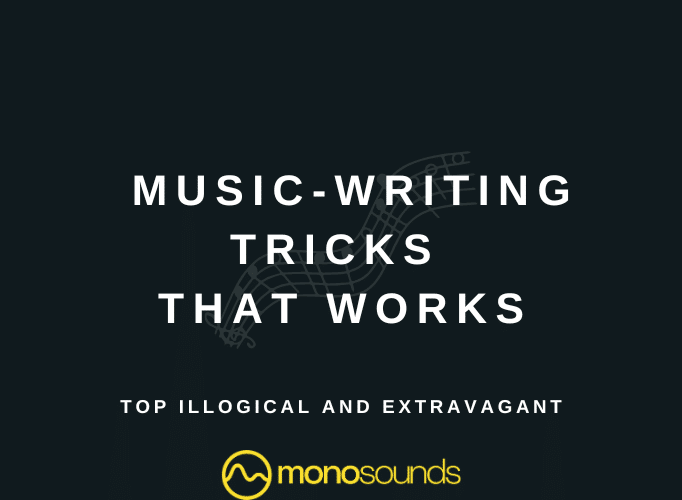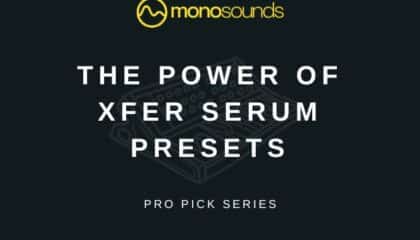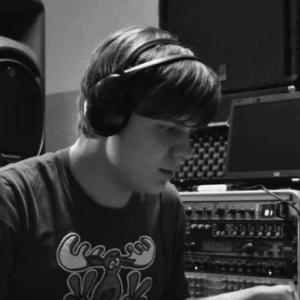
This is the my personal Top-5 of Xfer Serum Presets…

Music is an art that provides unlimited opportunities for self-expression and experimentation. It has unspoken rules and standards that serve as the basis for writing music. But what happens when musicians ignore those rules and decide to experiment with sound?
Sometimes it’s these illogical and extravagant techniques that lead to truly unforgettable and impressive compositions. In this article we will consider TOP of the most unusual and even somewhat absurd solutions, which musicians successfully used to create unique compositions.
A journey through the sound labyrinth will help us understand exactly how these techniques have been applied to music and what results they have produced. We will learn the ideas behind the decisions that were made and how they helped musicians express emotion in sound form.
Looking at illogical and extravagant techniques in music writing can be a fascinating as well as educational exercise. It can sometimes result in truly unforgettable and impressive compositions. In addition, it will help you understand how innovation shapes, develops and influences the world’s musical culture.
Experimentation and the use of unusual techniques in writing music is of utmost importance in today’s music industry. It allows musicians not only to expand their knowledge and skills, but also to create unusual, compelling music that makes listeners stop and think.
Using illogical and extravagant techniques can help a musician create a unique sound that differs from standard genres and styles. Some famous musicians, such as Brian Eno, David Bowie and Kate Bush, have always been known for their experimentation with sounds and styles. For example, David Bowie often uses unusual musical instruments and sounds to create a unique sound in his songs. His album “Low” is considered one of the most experimental works of his career.
In addition, musicians who continue to experiment and use unusual techniques often create new genres and styles. For example, the band Radiohead is known for their experimentation with genres, using elements of electronic music, rock, and jazz. Their album “Kid A” was one of the first successful experiments with the genre that became known as “idm”.
In the world of music, there have always been and will always be creative individuals who look for unusual ways to create new compositions. Some of these techniques may seem illogical or even extravagant, but despite this, they are able to amaze the listener and bring the author the success he deserves.
The use of atypical instruments is another technique that can greatly expand the sonic palette of a composition. Classical instruments such as guitar, piano or drums, of course, have their own unique sound and are deservedly mainstream in most genres. However, the use of atypical instruments can add uniqueness and originality to a composition.
For example, Edward Sharpe and his band The Magnetic Zeros used the sounds of a toothbrush and a resonating bowl in their famous song “Home” to create a unique percussion sound. Another example is Radiohead, in their song “Paranoid Android,” used a thermenvox instrument that creates sounds by changing the frequency of an electromagnetic field, and thus added an unusual sound to the song.
However, you have to be careful when using atypical instruments, as this does not always lead to the desired result. Sometimes the use of atypical instruments can sound ridiculous and distract the listener from the main idea of the composition. Therefore, it is important to skillfully balance the use of atypical and classical instruments to create a harmonious sound.
One of the most effective ways to capture the listener’s attention is through the use of unconventional song structures. Breaking the standard structure means a range of adjustments, from changing the size and shape of the songs to different variations in the course of the composition.
Interestingly, the musical experiments involved in breaking the standard rules often help musicians and sound designers create more complex, yet more engaging, compositions. In addition, the use of unconventional structures often becomes a way of expressing one’s own ideas and emotions in an original way.
Nowadays, with many musicians using computers and electronic tools to create music, it is becoming easier and easier to experiment with composition structure. Professionals have many times more opportunities to create unique and memorable songs that are sure to stand out from traditional compositions.
The use of unusual harmonies is another technique in music writing that may seem illogical and extravagant. Instead of using standard harmonic progressions, musicians use unusual combinations of chords and sounds to create unique and unexpected musical images.
One of the most famous examples of the use of unusual harmonies is the song “Yesterday” by The Beatles. This song uses a bold harmonic progression that includes the E7 sound, which is unusual for that tone and creates tension in the music.
Another example is the song “I Will Always Love You” by Whitney Houston. It uses an unusual harmonic technique called modal harmony. This technique creates an atmosphere of mystery and mystery in the music.
Also unusual harmonies are often used in jazz music, such as in compositions by John Coltrane. He used chord combinations that had not previously been used in jazz, and thus created a new form of music.
The use of unusual harmonies opens up new musical possibilities and unique sound images that can be appealing to the listener. This technique requires a great deal of courage and creative freedom on the part of the musician to take risks and use unusual harmonies in their work.
The use of unexpected elements is another illogical and extravagant technique in writing music that sometimes leads to a unique and interesting sounding composition. It consists of adding elements to the music that are not expected in a given genre or composition. In this way, the musician creates an unusual sound that will attract the attention of the listeners.
One example of the use of this technique can be seen in the song “Bohemian Rhapsody” by Queen. In this composition, the musicians added elements of opera, which is unexpected for rock and pop music, and created a unique sound.
Another classic example is considered to be the composition “Paranoid Android” by Radiohead, which used elements of classical music, as well as unusual transitions from one musical mood to another.
The use of unexpected elements is seen as an effective technique, if the musician introduces them into the composition in such a way that they do not look out of place and sound natural and organic. This requires great skill and creativity from the musician, so as not to overload the composition and make it unnecessarily complicated.
Using unexpected elements is a step toward creating original and memorable music, but it may not work if the elements are not chosen correctly. However, musicians who have taken the risk of using this technique have often achieved success and created historic hits.
It’s important to remember that using unconventional techniques does not guarantee success. But experimentation can lead to the discovery of new and interesting ideas, which will be the first step toward creating unique and memorable music. So don’t be afraid to take risks and experiment in the process of writing your musical compositions.

This is the my personal Top-5 of Xfer Serum Presets…

Welcome to the ultimate guide on how to use Xfer…

Hip hop music has been one of the most popular…

Greetings fellow sound engineers and music creators, and welcome to…
